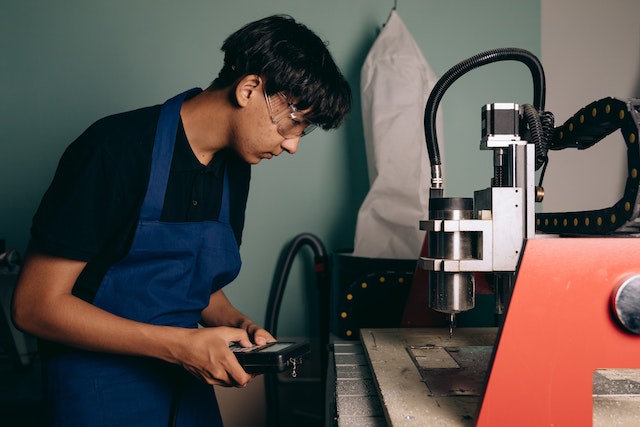Think of your hydraulic hose as the delivery guy – it’s responsible for transporting fluid efficiently from point A to point B. That’s why determining the correct hose size is one of the most important factors when creating a custom assembly.
Sizing a hose is determined by the inner diameter and rate of fluid flow. It’s essential to consider dash sizes (a kind of code) and how the i.d. of a hose matches up with other system components.
Material
When dealing with hydraulic systems, several components need to come together for the system to function correctly. One of those components is the hose.
The wrong hose can cause everything from production downtime to environmental contamination concerns—and in the worst-case scenario, it could even cost human lives.
When choosing the proper hose, six factors should always be considered: Size, Temperature, Application, Material/Media, Pressure, and Ends/Delivery. Let’s look at each of these factors in more detail:
Temperature
The hose must withstand the maximum fluid and ambient temperatures it will encounter during use. This is especially important for return lines, which will be exposed to abrasion and mechanical loads, and refueling lines, which can see extreme temperature fluctuations.
The application includes routing requirements, minimum bend radius, and abrasion. It’s also essential that the hose and any fittings, O-rings, or other accessories are chemically compatible with the medium being conveyed.
The hose ID must be correctly sized for flow velocity and minimal pressure loss. Check the lay line printed on an old hose before cutting to measure its internal diameter and ensure you have a replacement with the correct size. This helps avoid excessive turbulence and heat generation, which can increase friction and system pressure drop.
Pressure
There are different pressures to choose from when selecting a hydraulic hose. Knowing the maximum system pressure your application is expected to encounter is essential, as frequent pressure spikes can shorten hose life.
Another consideration is if your hydraulic hose will be exposed to dynamic pressure, including temperature changes and shocks/pulses from the equipment moving. This type of application will require a more flexible hose or one with a resilient cover to resist damage.
You’ll also want to consider the hose ends and how they’re connected to your system. There are permanent couplings designed for a pre-determined connection and field-attachable couplings that you can crimp onto a relationship with a pair of pliers. You’ll want to select a fitting that matches the hose end to ensure a secure, leak-free fit.
Ends
Hydraulic hoses must contain and convey hydraulic fluid while resisting vibration, shock, and harsh environmental conditions. This is especially important for mobile equipment that experiences high levels of movement.
The hose’s inner diameter must be compatible with the type of fluid being transported. Choosing the incorrect diameter increases linear velocity and causes excessive heat, friction, and turbulence within the system.
Hose-end fittings and adapters must also be chosen to match the application. These are available in various styles and materials to accommodate various pressure ratings and mechanical interfaces. They must be correctly installed and aligned with the hose to avoid leaks. Couplings are available in permanent types for installation at the factory and field-attachable versions for use on specialist vehicles. The correct thread choice can reduce leaking and improve the ease of assembly.
Delivery
Understanding that hydraulic hose sizing isn’t a “one size fits all” scenario is crucial. Choosing the right length ensures that your system moves fluidly and smoothly and avoids excessive friction.
Another important consideration is whether your system will run at a constant or pulsating/intermittent pressure. Specialized hose designs are optimized for pulsating pressure, while other types can handle static or continuous stress.
Finally, it would help if you chose the appropriate END fittings. This will determine how your hose connects to the rest of your system, including the proper attachment method. This could be threaded, cam locks, quick-couplers, or an alternative connection style. This can also impact your choice of fitting material since some have different pressure ratings than others.

